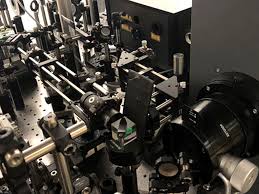
Breaking News
 Israeli chief of staff officially approves plan to occupy Gaza City
Israeli chief of staff officially approves plan to occupy Gaza City
 Report From "Blueprint for Peace"
Report From "Blueprint for Peace"
 Are They Lying to Us About Inflation?
Are They Lying to Us About Inflation?
Top Tech News
 Chinese Scientists Produce 'Impossible' Steel to Line Nuclear Fusion Reactors in Major Break
Chinese Scientists Produce 'Impossible' Steel to Line Nuclear Fusion Reactors in Major Break
 1,000 miles: EV range world record demolished ... by a pickup truck
1,000 miles: EV range world record demolished ... by a pickup truck
 Fermented Stevia Extract Kills Pancreatic Cancer Cells In Lab Tests
Fermented Stevia Extract Kills Pancreatic Cancer Cells In Lab Tests
 3D printing set to slash nuclear plant build times & costs
3D printing set to slash nuclear plant build times & costs
 You can design the wheels for NASA's next moon vehicle with the 'Rock and Roll Challenge
You can design the wheels for NASA's next moon vehicle with the 'Rock and Roll Challenge
 'Robot skin' beats human reflexes, transforms grip with fabric-powered touch
'Robot skin' beats human reflexes, transforms grip with fabric-powered touch
 World's first nuclear fusion plant being built in US to power Microsoft data centers
World's first nuclear fusion plant being built in US to power Microsoft data centers
 The mitochondria are more than just the "powerhouse of the cell" – they initiate immune...
The mitochondria are more than just the "powerhouse of the cell" – they initiate immune...
 Historic Aviation Engine Advance to Unlock Hypersonic Mach 10 Planes
Historic Aviation Engine Advance to Unlock Hypersonic Mach 10 Planes
 OpenAI CEO Sam Altman Pitches Eyeball-Scanning World ID to Bankers
OpenAI CEO Sam Altman Pitches Eyeball-Scanning World ID to Bankers
World's fastest camera shoots 10 trillion frames a second

But now the world's fastest camera, developed by researchers at Caltech and INRS, blows them out of the water, capturing the world at a mind-boggling 10 trillion frames per second – fast enough to probe the nanoscale interactions between light and matter.
Last year, the record belonged to a Swedish team with a five-trillion-fps camera, which was itself an improvement of an earlier 4.4-trillion fps system. The new camera casually doubles the previous record-holder, which could make it easier to peer at the nanoscale world with greater "temporal" resolution.
For the new imaging technique, the team started with compressed ultrafast photography (CUP), a method that it is capable of 100 billion fps. That's nothing to scoff at by itself, but it's still not fast enough to really capture what's going on with ultrafast laser pulses, which occur on the scale of femtoseconds. A femtosecond, for reference, is one quadrillionth of a second.

 The Remote Access Car . . .
The Remote Access Car . . .

